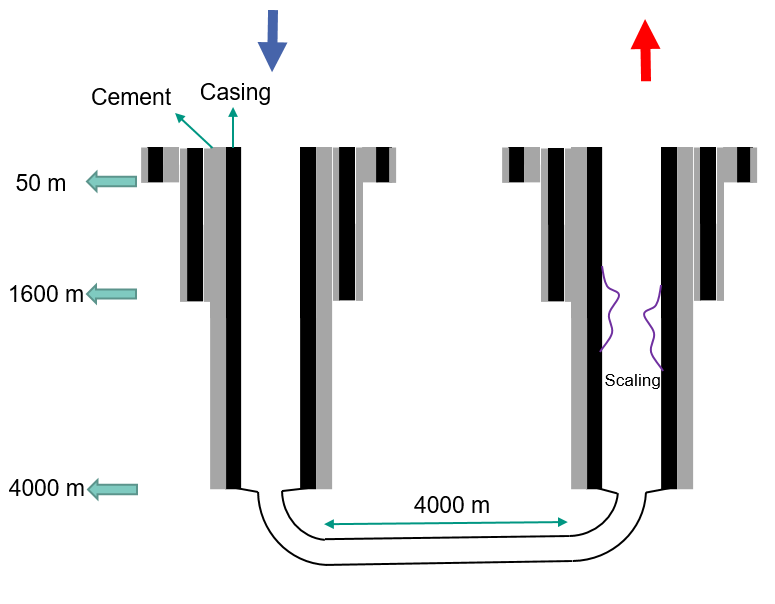Numerical simulation of non-isothermal multiphase and multi-component transport in deep geothermal systems
Supervisor:
Person in charge:
Extracting geothermal water from hydrothermal systems is a promising approach to exploit geothermal energy. However, scaling problems caused by the precipitation of minerals in the wellbores can decrease the production rate and endanger the system's profitability. This problem becomes worse when the fluid starts to evaporate. Because of salts' negligible solubility in vapor, water evaporation is associated with rapid augmentation of salt concentration in the liquid phase, leading to oversaturation. Pressure, temperature, and concentration of various ions and gases are the main factors controlling the solubility of minerals in water. Therefore, tracking the thermodynamic state and thermos-physical properties of working fluid is of high importance to predict the exact location of scaling.
Numerical simulation of these multiphase reactive flows in geothermal wellbores is accompanied by several challenges, including:
- 1. Solving coupled equations of mass, momentum, and energy conservation
- 2. Modeling thermal interaction between wellbore and formation
- 3. Transporting different species in the simulation environment
- 4. Designing an appropriate equation of state to :
- Calculate the solubility of different gases and salts in the liquid phase
- Estimate thermos-physical properties of the gas mixture
- 5. Modeling reaction between different species
Regarding the challenges mentioned above, this project aims at programming a finite element solver to precisely describe the physical and chemical processes in multiphase reactive flows while decreasing computational cost.

